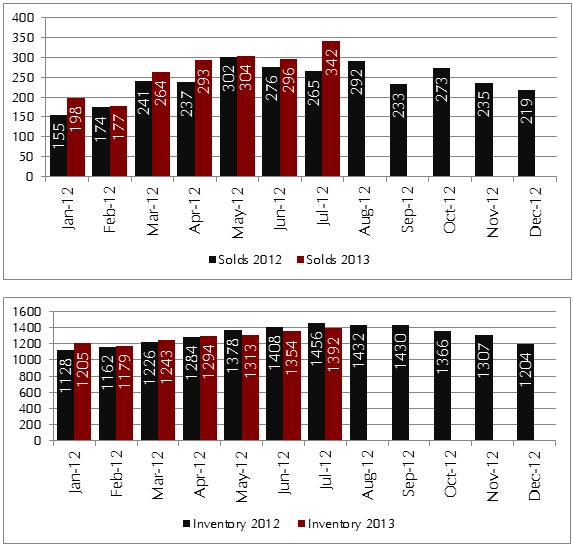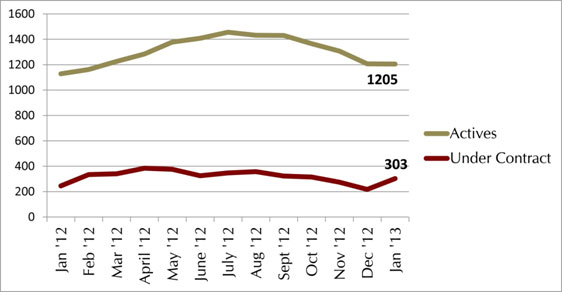 According to Bankrate.com, 30 year mortgage interest rates were at 4.74% week before last from 4.57% the week before) and are up 1.5% since the lows hit in December of 2012. This is also higher than one year ago when mortgage rates were 3.91%.
According to Bankrate.com, 30 year mortgage interest rates were at 4.74% week before last from 4.57% the week before) and are up 1.5% since the lows hit in December of 2012. This is also higher than one year ago when mortgage rates were 3.91%.
While this may not seem like a significant increase, it can have an impact on buying power. For example, on a $200,000 loan, the change in interest rates from 3.91% to today’s 4.74% is $98 more per month or $35,280 over the life of the loan.
Interest rates are expected to continue to rise which has caused some buyers who were previously on the fence to get into the buyer pool now to the delight of sellers. If you have been considering selling your current home and moving to something larger, in a better location, or something with higher-quality finishes, this would classify you as a “move-up buyer” and rising interest rates may affect you more than other types of seller/buyers. Here’s why:
First-time homebuyers don’t have a home to sell. Their buying power certainly ties into interest rates, but the financial impact is less when the loan amount is lower. For example, on that $200,000 loan example above, the difference was $98 more per month. However, on a loan of $140,000, that difference is lessened to $68 per month.
Downsizing buyers may be saving per month after downsizing as they may be using the equity in the more-expensive home they are selling to put a larger down payment on the home they are downsizing to. For example, let’s say a retired couple is selling their home they have lived in for 15 years. They will be selling it for $300,000 and have $100,000 in equity in it. They plan on buying a home for $209,000 and they are putting their $100,000 as a down payment, leaving them with a loan amount of only $109,000. The difference between 3.91% and 4.74% for this loan amount is $53 per month.
However, the downsizing buyer still needs to sell their home. As interest rates rise, the number of buyers who can buy their home at that price will shrink. Therefore, downsizing buyers do still need to watch rates.
The move-up buyer needs to keep a close eye on interest rates as they are considering their move. For example, let’s say the move-up buyer has a home they are going to sell for $200,000 and they want to buy a home that is listed for $300,000. In this case they have about $50,000 in equity in the first home. This means they will take out a loan of about $250,000 for their move-up property.
If interest rates go up as in the 3.91% to 4.74% example, this can affect the move-up buyer two-fold. First, the buyer pool for their home they are trying to sell will shrink, making it more difficult for them to sell (although it can be argued that the same thing will happen with the home they wish to purchase) Second, the amount they would need to pay each month for their mortgage will increase (by $122 per month!)
The bottom line? If you are thinking about buying or selling, interest rates will definitely have an impact on the home you can purchase and how many buyers are available to purchase your home if you are trying to sell. Move-up buyers should consider the number of buyers who are in the market right now, wanting to buy, as this could be a great time to sell and find a great deal at a good interest rate. But time is of the essence. Please call us to learn your options and what moving now versus moving later could look like. Please call Jessica at (509) 947-2230 or Jennifer at (509) 947-5670.
All mortgage examples are for a 30 year fixed rate mortgage and payment amounts include principal and interest only. Downpayments, homeowners insurance, property taxes, private mortgage insurance, closing costs, etc have not been factored into these examples.








